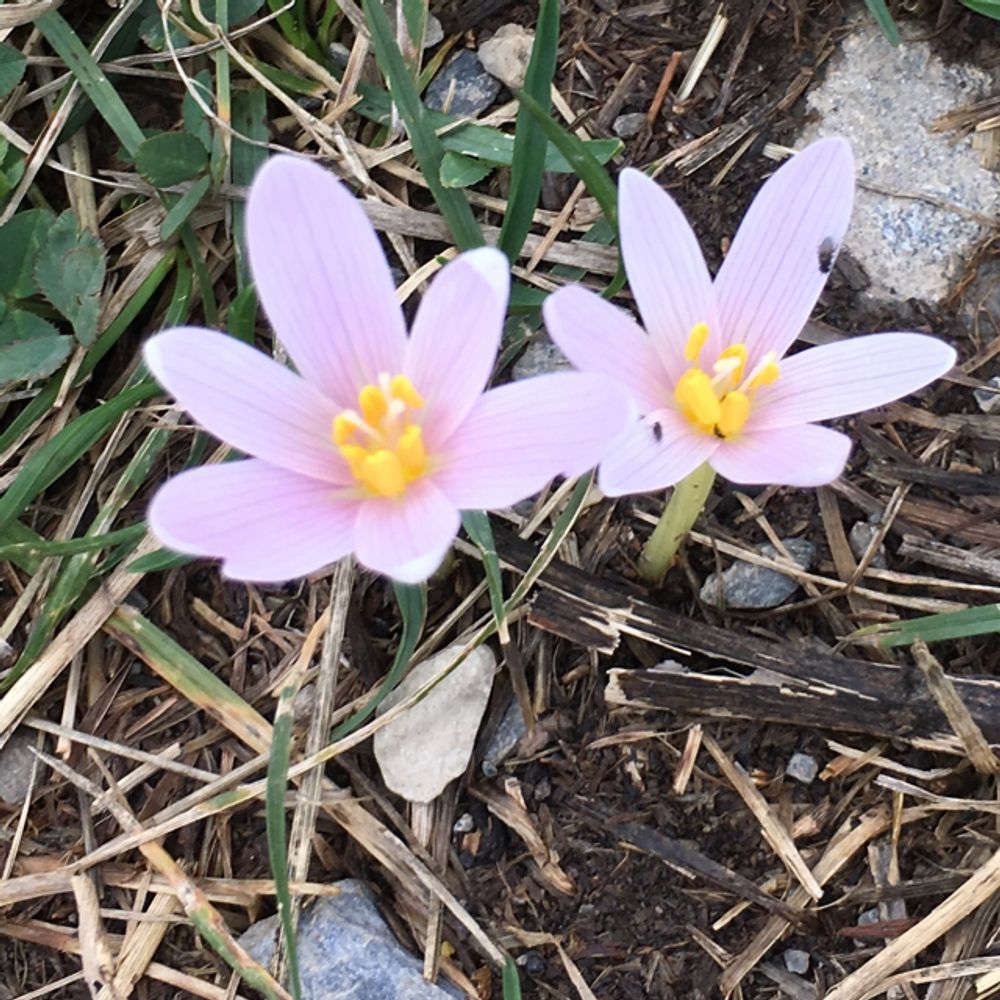Alpine saffron
(Colchicum alpinum)

Description
Colchicum alpinum is a species of flowering plant in the family Colchicaceae. It is a perennial plant native to the mountainous regions of Europe, including the Alps, Pyrenees, and Carpathians. Colchicum alpinum is commonly known as the alpine meadow saffron, and it is an attractive plant that produces beautiful flowers in the autumn. This article aims to provide detailed information on the botany, habitat, distribution, uses, and cultivation of Colchicum alpinum. Botanical Description Colchicum alpinum is a herbaceous perennial plant that grows from corms. It typically grows up to 20 cm tall, and its leaves are lance-shaped, up to 20 cm long and 2 cm wide. The flowers of Colchicum alpinum are large and showy, and they bloom in the autumn. The flowers are borne on stalks that are up to 20 cm tall, and they have six petals that are purple to lilac in color. The stamens and pistil are also prominently displayed in the center of the flower. The corms of Colchicum alpinum are small bulbs that store food and nutrients for the plant. The plant has a compact growth habit and forms attractive clumps over time. Habitat and Distribution Colchicum alpinum is native to the mountainous regions of Europe, including the Alps, Pyrenees, and Carpathians. It is commonly found in alpine meadows, rocky slopes, and woodland margins. The plant prefers moist, well-drained soils, and it can tolerate a wide range of pH levels. Colchicum alpinum can grow at elevations up to 3000 meters. While it is primarily found in Europe, it has also been introduced to other parts of the world, such as North America, and is cultivated in gardens and parks. Uses Colchicum alpinum has a long history of use in traditional medicine. The plant contains several alkaloids, including colchicine, which has been used to treat gout, arthritis, and other inflammatory conditions. Colchicine is also used in the treatment of certain cancers, including leukemia and lymphoma. However, the therapeutic use of colchicine requires careful dosing and monitoring, as it can be toxic in high doses. In addition to its medicinal uses, Colchicum alpinum is also grown as an ornamental plant for its attractive flowers. It is a beautiful and easy-to-grow plant that is well-suited to rock gardens, borders, and woodland settings. Its striking flowers add a splash of color to the garden in the autumn when many other plants have finished blooming. Overall, Colchicum alpinum is valued both for its medicinal properties and its ornamental value in landscaping and horticulture. Cultivation Colchicum alpinum is a relatively easy plant to cultivate and is well-suited to rock gardens, borders, and woodland settings. Here are some tips for successfully growing Colchicum alpinum: Soil: Colchicum alpinum prefers well-drained soil that is rich in organic matter. It can tolerate a wide range of pH levels, but a slightly acidic to neutral soil is ideal. Planting: The best time to plant Colchicum alpinum is in the autumn, just before the first frost. The corms should be planted 8-10 cm deep and 10-15 cm apart. They should be planted with their pointed end facing up. Sun and Water: Colchicum alpinum requires full sun to partial shade and regular watering during the growing season. However, it is important not to overwater, as the corms can rot in waterlogged soil. Fertilizer: Colchicum alpinum does not require much fertilizer, but a light application of a balanced fertilizer in the spring can help promote healthy growth. Propagation: Colchicum alpinum can be propagated by division of the corms in the spring or autumn. The corms can be carefully dug up and divided into smaller sections, each with at least one healthy shoot. Overall, Colchicum alpinum is a hardy plant that is well-suited to a range of growing conditions. With the right care, it can thrive in the garden and provide beautiful blooms in the autumn. Conservation Status The conservation status of Colchicum alpinum is not currently a major concern, as the plant is widespread and not considered to be threatened. However, like many plant species, Colchicum alpinum could be affected by habitat loss, climate change, and other environmental factors. In some regions, the plant is protected by law and cannot be collected from the wild without a permit. In cultivation, it is important to purchase plants or bulbs from reputable sources to ensure that they are not obtained from wild populations. Overall, while the conservation status of Colchicum alpinum is currently stable, it is important to continue to monitor the plant's populations and take steps to protect its habitat and ensure its long-term survival. Conclusion Colchicum alpinum is a beautiful and useful plant that is well-suited to alpine meadows, rock gardens, and borders. It has a long history of use in traditional medicine, and its alkaloids have been used to treat a range of inflammatory conditions and certain types of cancer. Colchicum alpinum is also easy to cultivate and can be propagated by division of the corms. Overall, Colchicum alpinum is a valuable addition to any garden or landscape.
Taxonomic tree:







